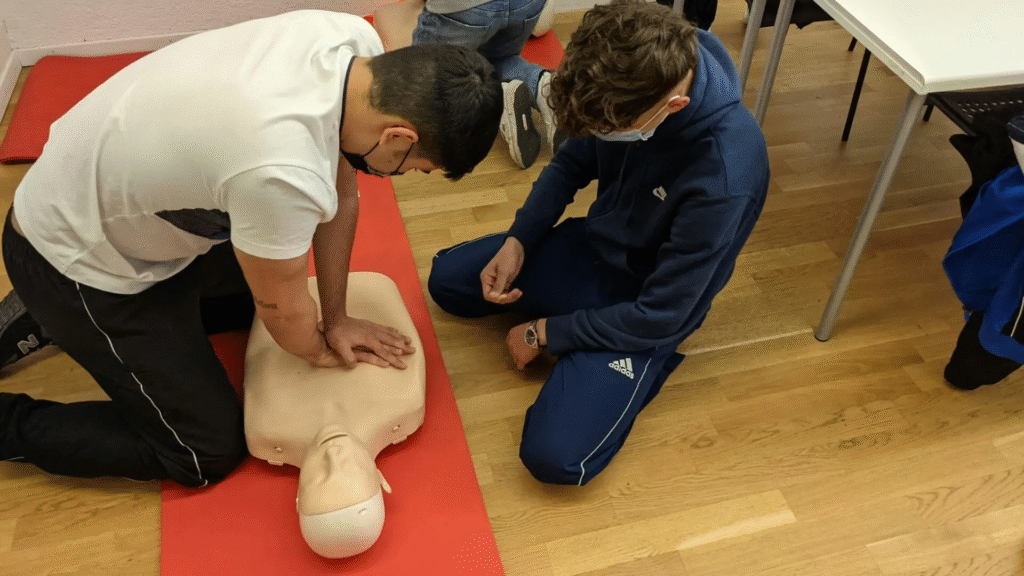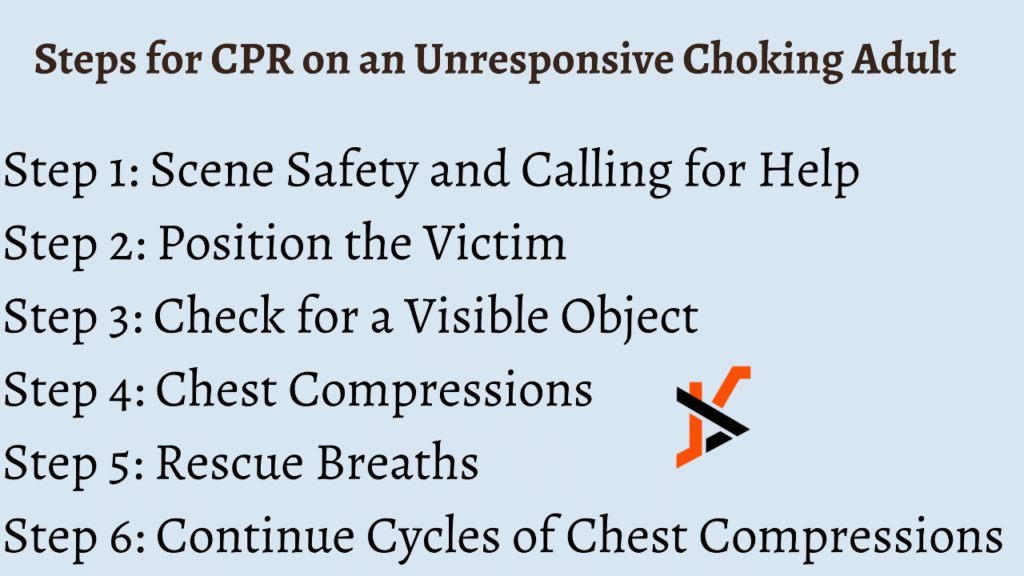Choking emergencies can happen anytime, anywhere. Knowing how to act fast and perform CPR correctly can save a life. But how does CPR differ in an unresponsive adult choking victim compared to other situations? This simple guide will walk you through everything you need to know so you feel confident to help when seconds count.
What Is CPR and Why Is It Important?
Cardiopulmonary resuscitation (CPR) is a lifesaving technique used during emergencies when someone’s heart stops beating or they stop breathing. It helps keep blood and oxygen moving through the body until professional help arrives. CPR combines chest compressions and rescue breaths to mimic the way the heart and lungs work.
When someone is unresponsive and choking, CPR becomes even more critical. In such situations, the airway may still be blocked, and the lack of oxygen can lead to brain damage or death in minutes. Acting quickly and correctly gives the person their best chance of survival. Even if you’re unsure, doing something is better than doing nothing.
How Does CPR Differ for Choking Adults?
For a choking adult who is unresponsive, CPR differs slightly from standard CPR. Normally, you would give chest compressions and rescue breaths in a rhythm. But in this case, you also have to check for and clear any airway blockage before giving breaths. Chest compressions alone may help dislodge the object.
The biggest difference is the added step of looking inside the mouth during CPR cycles. If you see an object, try to remove it carefully. Never do a blind finger sweep because you could push the object deeper into the throat. Remember, unresponsiveness plus choking means there’s likely still something obstructing the airway.
Start With Chest Compressions
If the person is unresponsive and not breathing normally, call 911 immediately or ask someone else to do it. Then start chest compressions without delay.

Position your hands in the center of their chest and push hard and fast—about 2 inches deep and at a rate of 100–120 compressions per minute. This action helps circulate oxygen-rich blood to vital organs. Even if there’s a blockage, the pressure from compressions might help expel the object from the airway.
Look for Any Blockage
After 30 compressions, tilt the person’s head back slightly and check their mouth for any visible obstruction. If you see the object and can reach it easily, remove it carefully with your fingers. Do not try to grab something you can’t see—it could make things worse.
Give Gentle Rescue Breaths
If the airway seems clear, pinch the person’s nose shut and give 2 gentle rescue breaths. Watch for the chest to rise. If it doesn’t rise, reposition the head and try again. If the chest still doesn’t rise, the airway may still be blocked. Go back to chest compressions immediately.
Steps to Help an Unresponsive Choking Adult
- Call 911 or have someone else call.
- Begin 30 chest compressions.
- Open the airway and check for blockage.
- If you see an object, remove it carefully.
- Attempt 2 rescue breaths.
- Repeat cycles of 30 compressions and 2 breaths until help arrives or the person starts breathing.
Signs Someone Is Unresponsive and Choking
Recognizing an unresponsive choking adult is key. Common signs include:
- The person is not responding when you talk or shake them.
- They are not breathing normally or not breathing at all.
- Their skin may appear bluish, especially around the lips and fingernails.
- You may have seen them clutch their throat earlier, the universal choking sign.
If they collapse and become unresponsive, assume their airway is blocked and begin CPR immediately.
How to Check If They’re Breathing
Before starting CPR, check if the person is breathing by:
- Tilting their head back slightly to open the airway.
- Looking to see if their chest rises and falls.
- Listening for breathing sounds.
- Feeling for air movement on your cheek.
If they are not breathing or only gasping, start chest compressions right away.
When to Call for Help
Call 911 as soon as you notice someone is unresponsive and choking. If you are alone, use the speaker function on your phone so you can start CPR while speaking to emergency dispatchers. Immediate professional help increases the chance of survival.

Common Mistakes to Avoid During CPR
Many people hesitate or make errors when performing CPR. Avoid these common mistakes:
- Delaying action: Every second counts, so start CPR immediately.
- Not pushing hard enough: Compressions must be deep enough to circulate blood.
- Blind finger sweeps: Never sweep blindly inside the mouth—you could push the object deeper.
- Giving too much air: Rescue breaths should be gentle to avoid forcing air into the stomach.
Why Early Action Saves Lives
Brain cells begin dying within 4–6 minutes without oxygen. Early CPR and calling 911 can double or even triple a choking victim’s chance of survival. Quick action also prevents permanent damage and gives paramedics a better starting point when they arrive.
CPR Training Tips for Families
CPR training isn’t just for healthcare workers. Everyone in your household should know basic CPR, especially if you have elderly family members or young children. Consider taking a certified CPR course with hands-on practice. Many organizations like the American Heart Association offer short, affordable classes in most communities.
Thoughts: Be Ready to Help
Choking emergencies are scary, but being prepared can make all the difference. Knowing how CPR differs for an unresponsive choking adult helps you act confidently and correctly. Remember, you don’t need to be perfect—doing something is always better than standing by.
The Bottom Line
When an adult is unresponsive and choking, quick, correct CPR can save their life. Start chest compressions, check for visible blockages, and attempt rescue breaths carefully. Never wait for help to arrive before starting. The more you practice and learn now, the more ready you’ll be to step in and save a life when it matters most.

